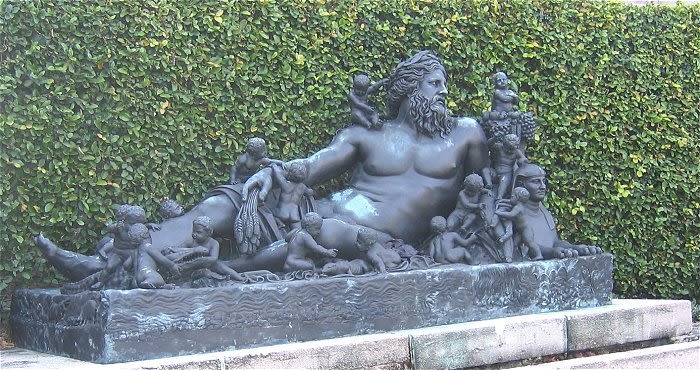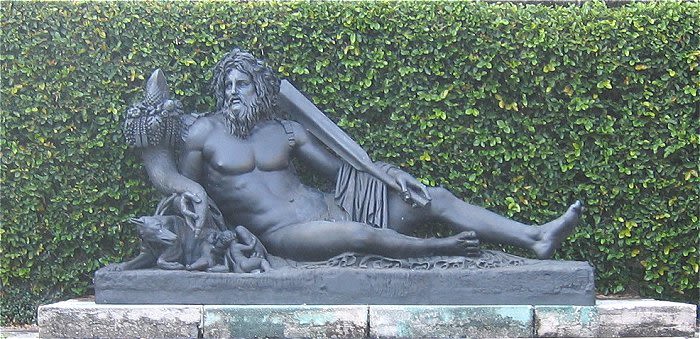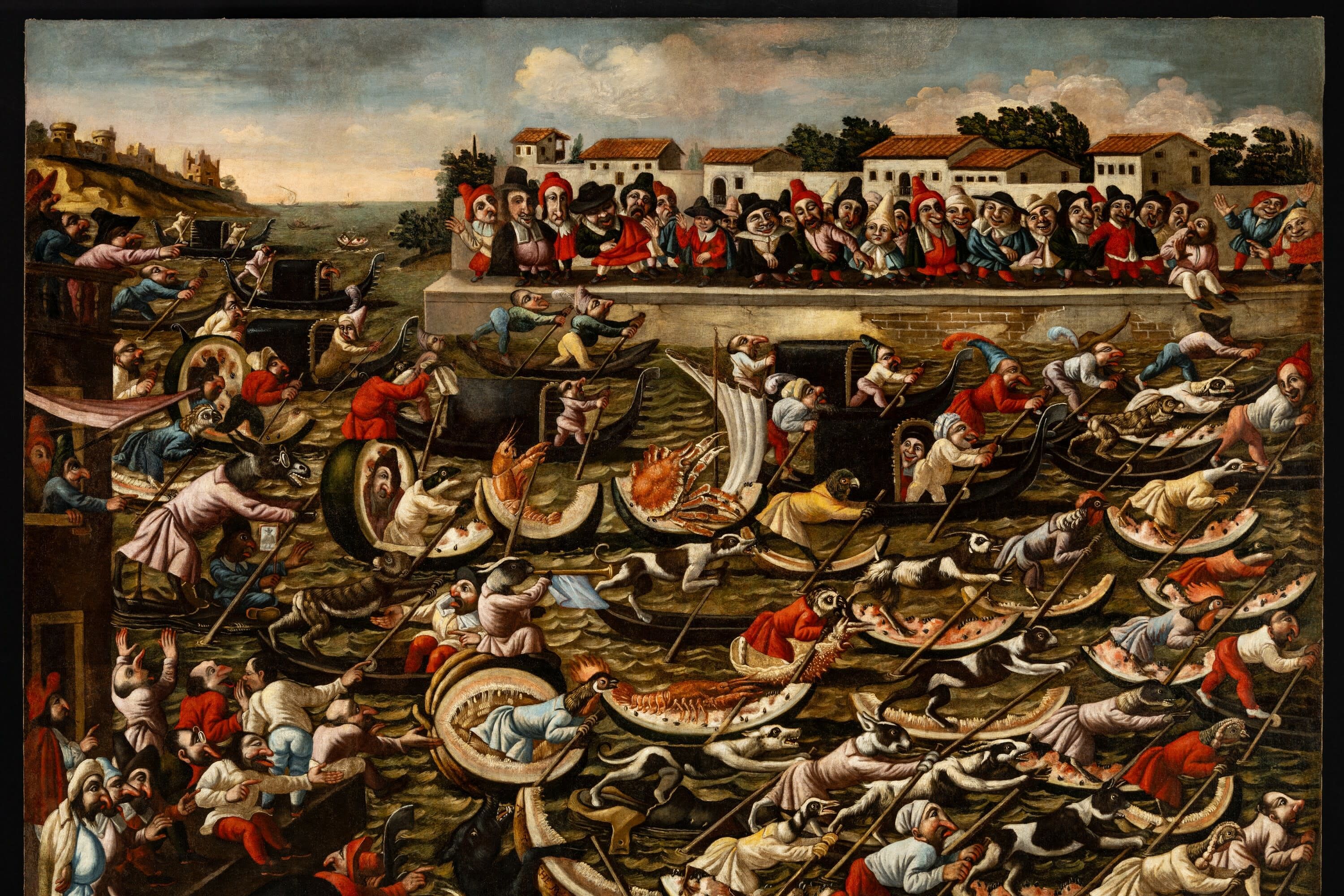River Statues at The Ringling

The River Nile, in the Ringling courtyard
Image: Courtesy The Ringling
These statues are bronze copies of the originals that were found in the early 16th century during excavations of the Iseum Campense, an ancient temple dedicated to Isis and Sarapis that once stood in the Campus Martius in Rome. They were installed at the Vatican until they were seized by France in 1797 and taken to the Louvre. Following the defeat of Napoleon, many confiscated works were returned to Italy; however, Pope Pius VII presented the figure of the River Tiber to the French monarchy and it remains at the Louvre today.
Carved from black marble, these statues both represent the agricultural fertility brought by these two rivers. The Tiber River holds a horn of plenty. Beside him is a she-wolf suckling Romulus and Remus, the mythological twin founders of the city of Rome. The Tiber holds an oar, representing navigation, and reliefs carved into the base of the statue detail animals grazing, navigation and the story of Aeneas.

The River Tiber
Image: Courtesy The Ringling
The Nile River also holds a horn of plenty, as well as a shaft of wheat. Crawling over him are putti, each representing one of the 16 cubits that the Nile River would ideally rise during flooding, assuring a fertile year. The statue leans on a sphinx and at his feet lounges a crocodile, representing Egypt.
The temple where these statues stood in Rome was built by worshippers of the Egyptian gods Isis and Serapis. Built in the same square as the Pantheon, the temple was destroyed by the emperor Tiberius in 19 AD. Rebuilt under Caligula (AD 37-41), it was destroyed again by fire in the year 80, and subsequently rebuilt as the worship of Isis was incorporated into the Roman pantheon.
Due to this complex history, dating these works is difficult; The Nile is thought to be a copy of a Hellenistic statue, probably from Alexandria. It is considered a more skillfully executed piece than its companion. The Tiber is thought to be from the Emperor Hadrian’s time (AD 117-138) as the two rivers were often featured on coins of that era, and a copy of each statue was at the Emperor’s villa at Tivoli. The scenes decorating the base from the Aeneid predate Virgil’s version of the epic myth, in keeping with Hadrian’s preference for ancient authors.
The Ringlings purchased the bronze copies of these ancient statues from the Chiurrazzi Foundry in the early 20th century. They now flank either side of the fountain beneath the statue of David in the Museum of Art Courtyard.



